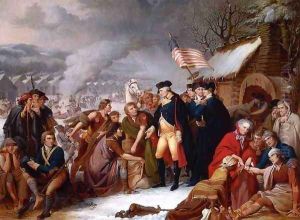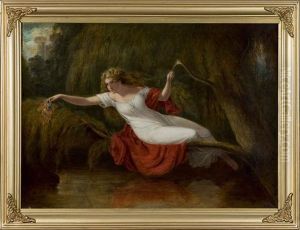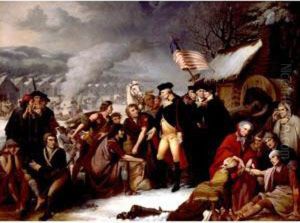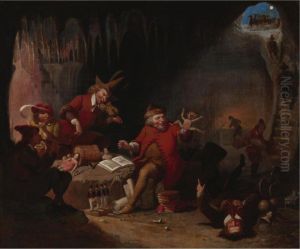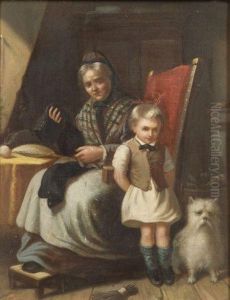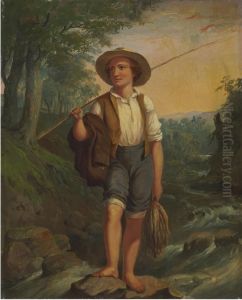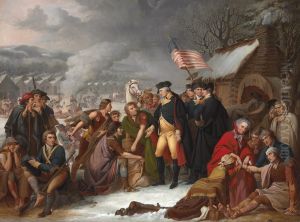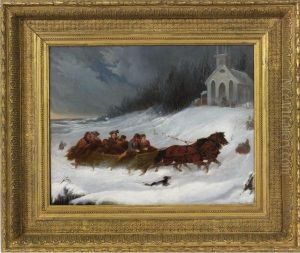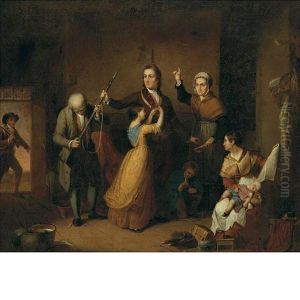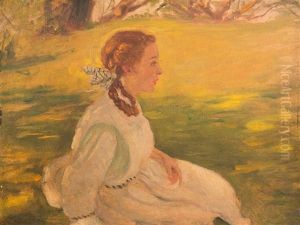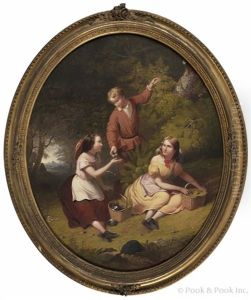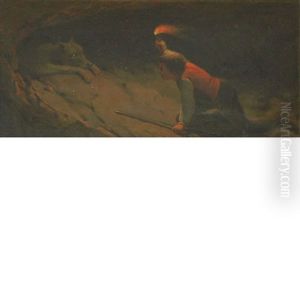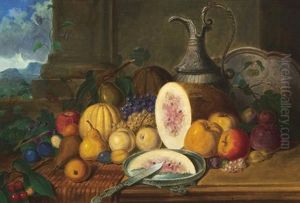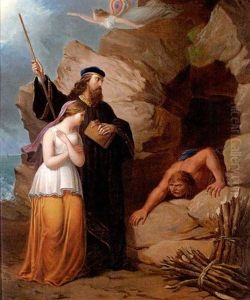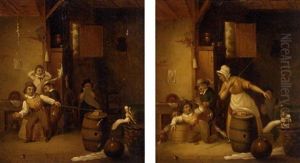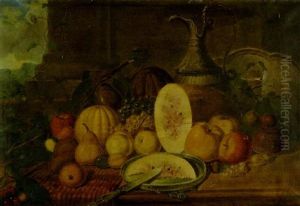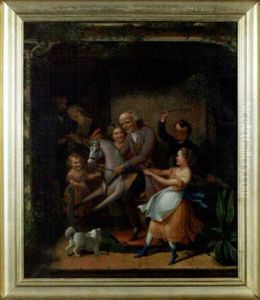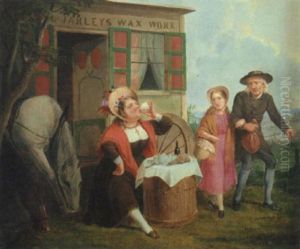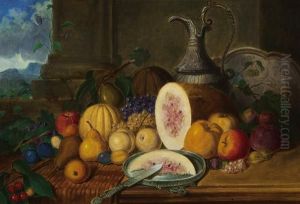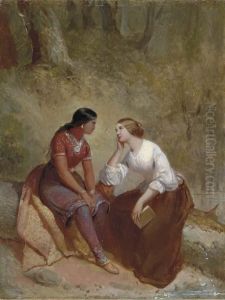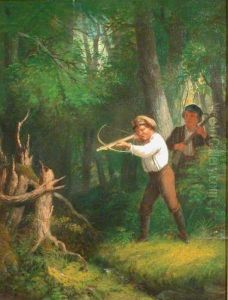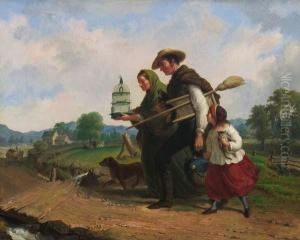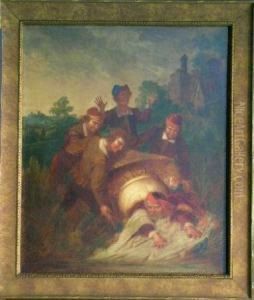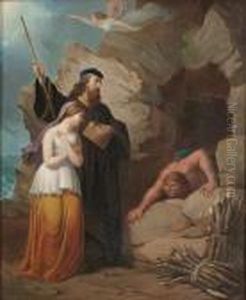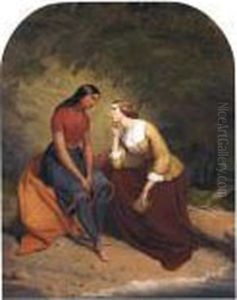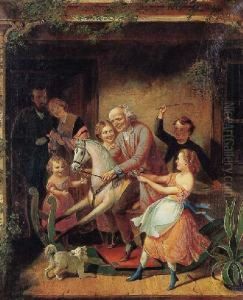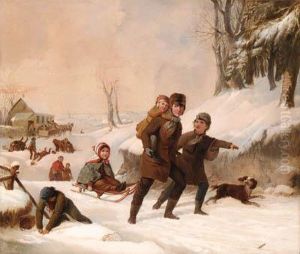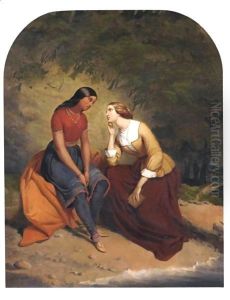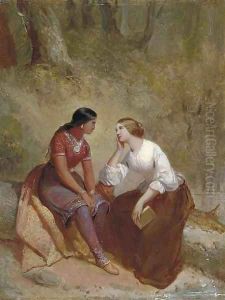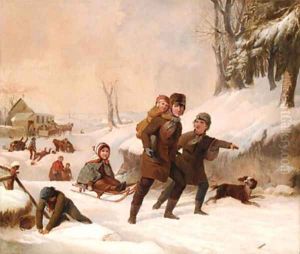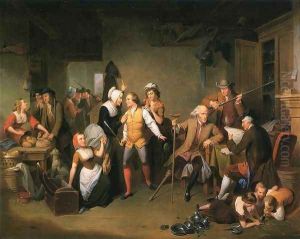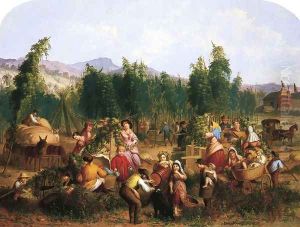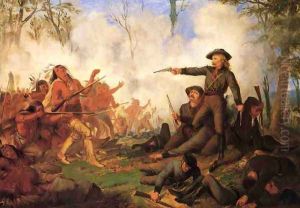Tompkins Harrison Matteson Paintings
Tompkins Harrison Matteson was an American painter born on May 9, 1813, in Peterboro, New York. He is known for his genre paintings that often depicted scenes from American history, literature, and everyday life in the 19th century. Matteson developed an interest in art at an early age and pursued his passion through self-study and later formal education.
In 1831, he moved to New York City to study under the well-known artist Samuel F.B. Morse, who is also credited with inventing the telegraph. Morse's influence helped Matteson to develop a style that combined meticulous detail with a narrative quality. He became associated with the National Academy of Design, where he frequently exhibited his works.
Matteson's paintings were characterized by their vibrant storytelling and were often inspired by the spirit of nationalism and democracy that was prevalent during his time. He captured moments of heroism, patriotism, and the moral dilemmas faced by individuals in the young nation's history. Some of his notable works include 'The Last of the Race' and 'Trial of George Jacobs for Witchcraft.'
During the 1850s, Matteson's career reached its peak, and his paintings were in high demand. His works resonated with the American public, who saw their own history and values reflected in his art. However, by the late 1850s, tastes in art began to shift, and Matteson's style fell out of favor as the American art scene began to embrace more European influences and the emerging Realism movement.
Despite the decline in popularity, Matteson continued to paint until his later years. After his death on February 2, 1884, in Sherburne, New York, his works were somewhat forgotten in the art world, overshadowed by the new artistic movements of the late 19th and early 20th centuries. However, in recent years, there has been a renewed interest in genre painters like Matteson, and his works have been reevaluated for their historical value and contribution to the narrative of American art history.
